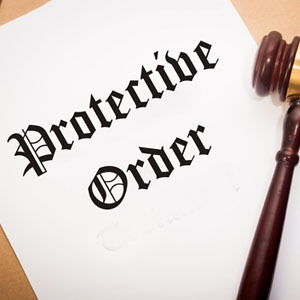Call Now (410) 650-4242

We recently put out an article on Peace Orders, which are similar to but different from Protective Orders. There are important distinctions between Peace Orders and Protective Orders. The purpose of this article is to highlight some of the differences between the two and how, under the right circumstances, a Protective Order can help you.
Similar to a Peace Order, a Protective Order is a type of restraining order which a Court can enter restricting a person’s lawful ability to contact another person. Whether you should seek a Peace Order or Protective Order largely depends on your relationship with the person from whom you are seeking protection. The person filing the Petition for Protective Order and seeking protection from the Court is referred to as the “Petitioner.” The alleged abuser or person against whom the Petition is filed is referred to as the “Respondent.” These designations also apply if you are filing for a Peace Order.
Before you go into Court, it is critical to make sure that you are eligible to be granted a Protective Order under Maryland law. If you file for a Protective Order but do not have the requisite relationship with the Respondent in order to be granted a Protective Order, the Court will dismiss your Petition. If you are the spouse, ex-spouse, domestic partner, parent of a child with the Respondent, or dated or had a sexual relationship with the Respondent, and the Respondent committed an act of abuse against you, you are eligible for a Protective Order. Generally speaking, if you are in a domestic relationship with the Respondent or have recently had a domestic relationship with the Respondent, then you are likely eligible for a Protective Order.
On the other hand, if you do not meet any of the criteria listed above, you may not be eligible for a Protective Order and would instead need to seek a Peace Order. Common examples of relationships which would warrant a Peace Order, but not a Protective Order, include friends, non-sexual acquaintances or complete strangers. If you do not have a domestic or familial relationship with the Respondent, then you likely need to seek a Peace Order. You should consult with an attorney to first determine which type of Petition you must file based on your circumstances.
In order to obtain a Protective Order, you must demonstrate to the Court that the Respondent has committed an act of “abuse,” as defined under Maryland law. For purposes of Protective Orders, an act of abuse includes any of the following:
In order to obtain a Final Protective Order, the Petitioner must demonstrate to the Court by a preponderance of the evidence that the alleged act of abuse was committed against the Petitioner by the Respondent. The Petitioner may attempt to introduce evidence, such as their own testimony, testimony of other witnesses and documents to support their allegations of abuse. Of course, if the Respondent so chooses, the Respondent will have an opportunity to contest the Petitioner’s allegations and attempt to introduce evidence in support of the Respondent’s defense to the allegations.
If you have satisfied your burden of proof and demonstrated to the Court that a Final Protective Order is warranted, the Court will enter a Final Protective Order in your favor. In issuing a Final Protective Order, the Court can grant the Petitioner numerous forms of relief. For example, the Court can provide certain injunctive relief and Order that the Respondent refrain from taking certain actions, such as:
When issuing a Final Protective Order, the Court can also grant certain relief relating to custody and visitation of a minor child that the Petitioner and Respondent have in common. Specifically, the Court can:
In addition to the above, there are other forms of relief which the Court may order, including:
The Court has a wide array of tools at its disposal in fashioning a Final Protective Order. Ultimately, the Court is most concerned with protecting the Petitioner and any minor children which the Petitioner has with the Respondent from any further acts of abuse.
Unlike a Peace Order, which typically lasts only for a period of six (6) months, a Protective Order may last for up to twelve (12) months. In certain circumstances, a Final Protective Order may be extended past 12 months if certain criteria are met.
Robert Greenberg, Esq. and the law firm of Greenberg Legal Group LLC have successfully prosecuted and defended numerous protective order actions. Please contact our office at (410) 650-4242 for further assistance.